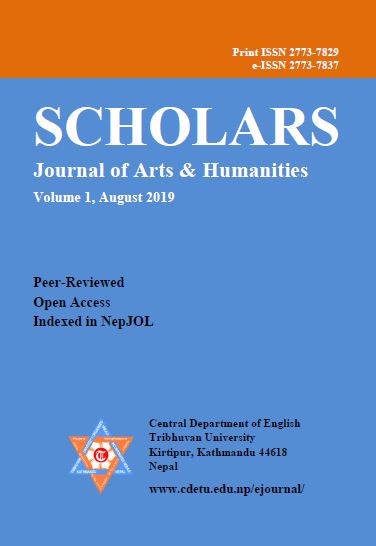What Is ‘Home’? The Meaning and Function of ‘Home’ in Morrison’s Song of Solomon
DOI:
https://doi.org/10.3126/sjah.v1i0.34449Keywords:
Home, ancestor, race, trauma, memory, history, healingAbstract
This paper explores the motif of ‘home’ in Toni Morrison’s novel Song of Solomon. Although home is a prominent and recurrent motif in many of Morrison’s works, this paper focuses explicitly on Song of Solomon. In Song of Solomon ‘home’ is more than a piece of geography. Instead, it is a space that is situated in race, a space where race and racial history matters, albeit in a positive and empowering way for the Black community. Such a home lives in the memories of people, and it is kept alive through the oral songs and stories that are handed down across generations of Black Americans. Home is also a space that provides protection from trauma and helps in the healing of the individual. This healing can take place through reconnection with the root or through a reignited sense of belongingness to the community. The sense of belongingness is strong in home, and that helps individuals within the community to shape a formidable sense of identity and a sense of self. Home is enriched by the presence of ancestors, who are the bearers of tradition and who act as the binding force within the community that pulls everything and everyone together into one coherent structure of relationships. But most importantly, home is what Milkman finds at the end of his journey from Northern to Southern America. In addition, once he finds it, he heals and transforms himself to prepare for a future that is more harmonious with his past.
Downloads
Downloads
Published
How to Cite
Issue
Section
License
© Central Department of English, Tribhuvan University and Authors




